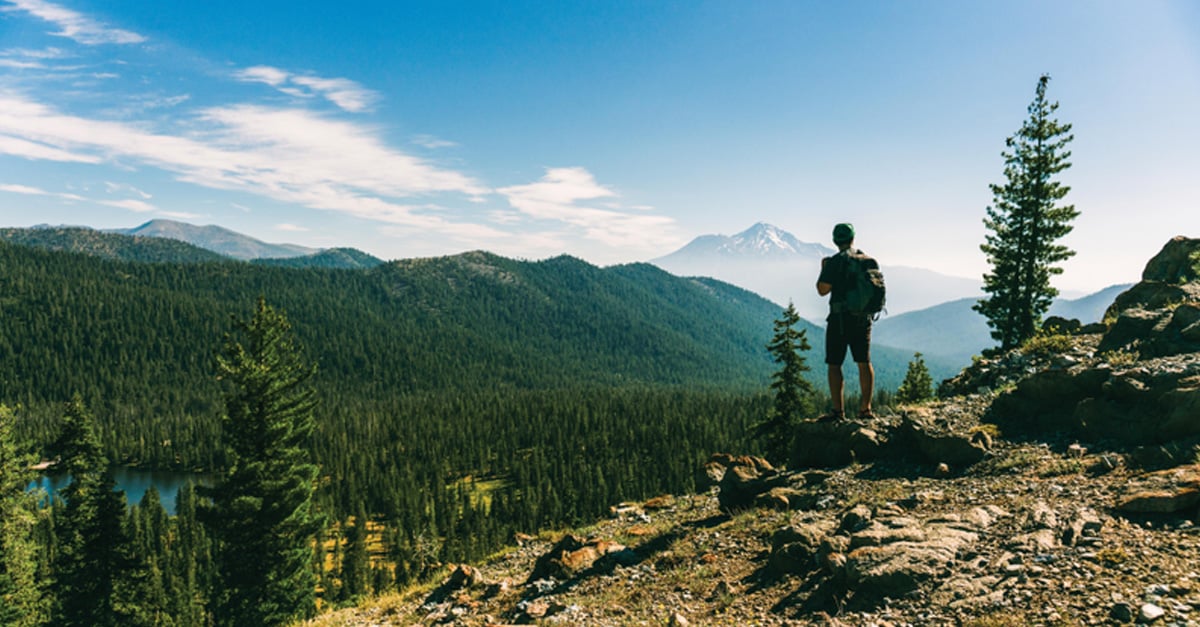Shasta-Trinity National Forest
Ruggedly Magnificent…
With a dash of the pen on April 26, 1905, Theodore Roosevelt designated the area between the interior Coastal Range on the west and the Cascade Range on the east in Northern California as the Trinity Forest Reserve. Several months later, the large inland Shasta Forest Reserve was created. Then, in 1954, these two forests were administratively combined and officially renamed the Shasta-Trinity National Forest – forming the largest national forest in California that now covers more than 2 million acres over parts of six counties.
These days, the Shasta-Trinity Forest is a haven of solitude, and a year-round destination for all kinds of outdoor adventure. “We get all sorts of folks who want to do anything from climbing Mt. Shasta to hiking, camping, fishing, skiing, rock climbing or whitewater boating. Then there are the special demographic groups who are interested in metaphysical and sacred sites,” explains Don Lee, a visitor information assistant with the U.S. Forest Service Mount Shasta Ranger District.
The vast forest encompasses five wilderness areas and more than 6,000 miles of streams and rivers. There are nearly 500 miles of hiking trails, including a 154-mile stretch of the Pacific Crest Trail, as well as Shasta Lake, the largest manmade lake in California. There’s off-the-grid wilderness and charming small towns. And, of course, rising 14,000 feet above it all is Mt. Shasta, the crown jewel of Northern California. “Nothing compares to the ascent to its summit, but it requires mountaineering skills and equipment. The most popular non-technical route is Avalanche Gulch, best climbed in the spring during the months of May through June or early July, as it is safer to climb with snow on the ground,” says Lee.
The waterways in the Shasta-Trinity National Forest also provide a huge draw, with the Trinity River as a main attraction. “It runs though the west side of the Shasta-Trinity National Forest with much of it along Highways 3 and 299, providing scenic drives through the forest. In fact, the Trinity Heritage Scenic Byway is a must-do trip for visitors,” explains Nancy Anderson, a visitor information assistant with the ranger station in Weaverville. She adds, “The north and south forks of the Trinity River are also excellent places to hike and camp for those who want to find solitude.”
Anglers tend to flock to bass-filled Trinity Lake, while the McCloud, Upper Sacramento and Trinity rivers are known around the world for blue ribbon trout-fishing and whitewater rafting. Waterfall seekers are also drawn to McCloud, which has three viewable waterfalls connected within the span of a couple miles. “Hikers generally start at Lower Falls and walk the trail one mile to the base of Middle Falls. Here the trail ascends a few easy switchbacks to an overlook above the falls before continuing on to the Upper Falls in another half-mile. The trail is rated handicapped accessible with a hardened natural surface. For those less mobile or in a hurry, you can drive to each of the falls, as well,” explains Lee.
Both Lee and Anderson suggest exploring the lakes that dot the region. Kayakers and canoeists can paddle around Lewiston, Castle and Siskiyou lakes, while Shasta Lake, with its 365 miles of shoreline, is popular with houseboaters, paddlers, swimmers and spelunkers. It’s also home to Lake Shasta Caverns, a beautiful limestone cave that’s billed as “three adventures in one” because of the boat ride to get there. “It really is a full package tour with scenery of Shasta Lake on the water, as well as 850 feet above the lake when you enter the caverns. The highlight is the caverns themselves, with the tour coming to a crescendo in the Cathedral Room – a massive room 125 feet in height,” explains Lake Shasta Caverns General Manager Matthew Doyle.
Once winter comes, many snowboarders and skiers seek out Mt. Shasta. Not only does it have its own ski park and Nordic ski area, there’s backcountry glacier skiing, which many people enjoy long after many of California’s ski resorts have closed. In the summer, the Mt. Shasta Ski Park also opens up to mountain biking and backpacking, while VS Equine, which offers guided horseback rides out of Mount Shasta, can make getting out to the backcountry a relative breeze. Even for the less adventurous, there’s a scenic drive up Everitt Memorial Highway, a 14-mile, two-lane paved road that goes up to the highest drivable point on Mt. Shasta. Lee explains, “The drive alone to 8,000 feet is worth it, but a short stroll through Panther Meadow during the summer floral bloom is a great finale.”
With so much wilderness and places to explore, everyone has a reason to visit the Shasta-Trinity National Forest – and an obligation to preserve it. Just as Teddy Roosevelt created this remarkable forest, he implored its protection, writing, “Of all the questions which can come before this nation…there is none which compares in importance with the great central task of leaving this land even a better land for our descendants than it is for us.”For more ideas on what to see and do around the Shasta-Trinity National Forest, and recreation passes and maps, visit the Shasta-Trinity National Forest website at www.fs.usda.gov/stnf or call one of the ranger stations.




